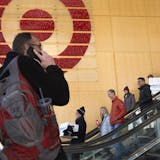Though they appear healthy most of the time, on occasion your trees might become shady characters, done in — and perhaps ultimately brought down — by disease or damage or both. To keep your trees healthy or to get rid of dying ones, you may want the benefit of professional advice, skill and labor.
To help you find this help, nonprofit consumer group Twin Cities Consumers' Checkbook and Checkbook.org has surveyed its members, Consumer Reports subscribers, and other randomly selected consumers about their experiences with area tree care services.
Until Nov. 5, Checkbook is offering free access to its ratings of tree care services to Star Tribune readers via Checkbook.org/StarTribune/trees.
You don't have to be an expert to spot many potential tree problems. Examine your trees several times a year for the following:
- Discolored leaves and thinning in the tree's crown;
- Roots pulled loose from the ground and fungal growths on roots and main trunk;
- Dead and fallen branches more than two inches in diameter;
- Deep vertical cracks on opposite sides of the main trunk;
- Sawdust on the trunk from wood-boring insects;
- A trunk that noticeably leans in one direction and a branch canopy that is not roughly balanced; and
- Other unusual deformations and deposits on leaves, limbs or bark.
Other reasons for tree work include eliminating the risk to your house, or to electrical or other utility wires from rubbing limbs or precarious overhanging limbs; letting light and breezes more readily reach your house, garden or lawn; and protecting foundations and drainage systems from invading roots.
In many cases, the problem and the solution will be obvious — removing specific limbs, for example. But sometimes it's difficult to diagnose and treat trees.
At those times, you need expert advice. But don't assume that all estimators from tree care companies can determine what's wrong and prescribe the correct treatment.
Checkbook's evaluation of local tree care services found big company-to-company differences in the quality of advice and work performed. Although several area companies rate quite high for the quality of their work, the news is not all good.



